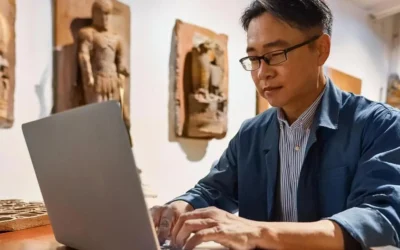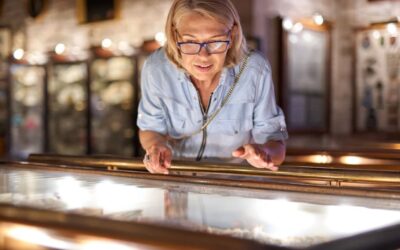Evaluating the Location of Museum Digital Assets

Rachael Cristine Woody
This week we’ll review the typical location setups for museum digital assets and why location of assets is important to ascertain in order to pair those assets with the corresponding museum data in a CMS.
The 4 Main Location Setups
There are currently four setups typically found regarding museum digital asset storage:
- In a local computer or server.
- In a cloud service.
- In a system that’s separate from the data.
- In a CMS that’s combined with the data.
Each of these comes with pros and cons when considering migration to a new CMS. This post will review each digital asset location setup and what to keep in mind as you prepare for your move to a new CMS.
1. A Local Computer or Server
If museum digital assets reside on a local computer or server, they will likely need to be reattached to the new museum CMS by yourself or other staff. If there were no previous ties this could be a simple upload to each corresponding record. However, if there were links to the local digital assets, those links may have to be recreated in order to properly place or link themselves in the new CMS. This setup is one of the more challenging ones and may require technical expertise both locally at your museum as well as from the CMS company.
2. A Cloud Service
A cloud service that’s separate from the CMS—like Google Drive, Dropbox, SharePoint, etc.—there are ways that the digital objects can be linked to the museum CMS. Exploration and assistance will need to be provided by the CMS vendor, as they’ll have known workflows and tools they can use to facilitate this work.
3. In a Separate System
A separate Digital Asset Management System (DAMS) may also be online, but if it’s more complex than a standard asset storage area (like option #2) then it could take some advance tools for accessing these assets and correctly linking them to the museum CMS. If the system offers OAI-PMH (aka harvesting) capabilities then the new CMS tool should be able to harvest both data and digital assets.
4. In the Museum CMS
This is usually the best option possible when locating museum digital assets. If there’s already a link between the digital asset and the corresponding data record, that linked relationship can usually be translated into a new museum CMS. Of course, each system is different and some are more “migration friendly” than others, but having documentation of this established relationship means that it’s easier for the existing digital assets to be located and correctly attached to the corresponding museum data once it’s in the new CMS. There’s also a greater chance that the new CMS can use an OAI-PMH tool to accurately extract both the data and the digital assets.
Conclusion
This month’s posts focused on what you can do to prepare for a new museum CMS so you’re ready as soon as the new CMS is available. Use these five posts as a reference for how to evaluate museum data quality, format, and location. The more you know about your data, the easier it will be for you to make effective decisions regarding any cleanup or migration of that data and linked assets to the new museum CMS.

Rachael Cristine Woody
If you’d like to learn more, please join us for “Evaluating the Shape of Museum Data”, presented by Rachael Woody on Wednesday, April 5, 2023 at 11 a.m. Pacific, 2 p.m. Eastern. (Can’t make it? Register anyway and we’ll send you a link to the recording). Register now or call 604-278-6717.
Never miss another post. Subscribe today!
Similar Posts
How Archives Can Enrich Museum Collections Online
Staffed archives are in constant motion in their attempt to provide and broaden access to the archival collections.
How to Enhance Museum Collections Online with New Information
One of the wonderful things about museums is that the learning never stops. There are always projects, exhibits, and programs in development that serve as constant instigators of research.
How to Enhance the Museum Object Record with Immediately Available Information
This month’s series focuses on the enhancement of museum object data using “hidden” troves of information. Hidden is in quotes because the information exists and often is not hidden—it just hasn’t been gathered for inclusion in the museum Collections Management System (CMS).
Where the Gaps Live with Traditional Museum Object Cataloging
Standard museum cataloging leverages the usual set of fields that are considered best practice. We tend to refer to this information as “the tombstone information,” meaning it is clear and concise in communicating the “need to know” information.




Leave a Comment
Comments are reviewed and must adhere to our comments policy.
0 Comments